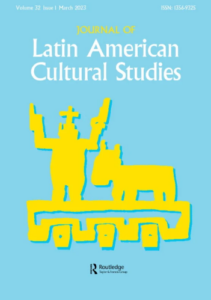Books / Edited Journal Issues / Articles and Book Chapters / Other Publications

Patrícia Vieira, ed. Special Issue“The Amazon River Basin: Extractivism, Aesthetics and Indigenous Perspectives.” Journal of Latin American Cultural Studies. 32.2 (2023).
The essays in this special issue analyze novels, essays, travel narratives, letters, film, photography and artworks that reveal the preponderance of an extractivist mindset in the approach to Amazonia and its peoples in recent history. The essays also showcase the creative ways in which Amazonian human and more-than-human communities forge counternarratives that underline their affective ties to the land.
Karen Shiratori, Laure Emperaire and Ana Gabriela Morim de Lima, eds. Special Issue “Voix de la terre”. Revue d’ethnoécologie. 23 (2023).
Through an interdisciplinary approach, this publication encourages exchanges between archaeology, archaeobotany, botany, agronomy and social anthropology, with different theoretical and methodological perspectives on plants with underground starchy reserves. Due to the diversity of the approaches proposed, the fields studied (Europe, Africa and South America) and the times mobilized, it also aims to reflect on plant-society connections in the context of a crisis that makes us reconsider relations between humans and non-humans, even the least visible of the latter, hidden beneath the ground.
This dossier brings together recent contributions focused on the lowlands of South America with the aim of highlighting the theme of dream activity in its relationship with Indigenous cosmopolitics (and by cosmopolitics we mean the process of composing people, collectives and worlds). In common, these works reflect on dreams as events full of consequences, not restricted to nightlife.



